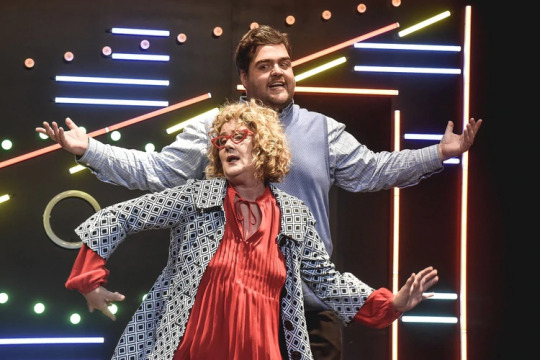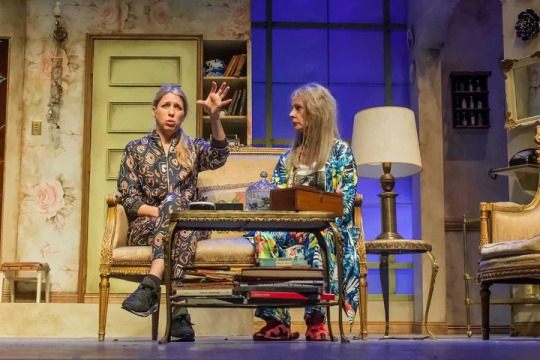#Richard Demaria
Explore tagged Tumblr posts
Text

Retro Murmeration Rituals
Released 22 March 2023
Wojciech Golczewski-MONO:04
Magic In Threes-It's Good to be the King
CIALYN-Convivium Isle
Gustavo Jobim-At the occult library
PILOTPRIEST-Bonus Track: The Canyons
The British Stereo Collective-Dread
Com Truise-...Of Your Fake Dimension
Stellarays-Pastoral Drama
Rolf Trostel-Bao
The Heartwood Institute-Great Gable
HOME-6
Folclore Impressionista-BONUS: Sound and Vision (7" extra track)
Rhomboid Mane-Obrist
RIEUX-Revok
Joel Vandroogenbroeck & Walt Rockman-Fairy Tale
Richard Demaria-Studio 96
Panamint Manse-LandMarks
The Overload-The Subliminal Man
Rising Sun Systems-Arcane Marine Biology
TALsounds-Soar
Richard Bone-Saiyuji (Dawn) (Daniele Baldelli & Marco Dionigi Remix)
Harvey Sutherland-Jouissance (Adrian Sherwood On-U Sound _Pure Enjoyment_ Dub)
Jake Schrock-Cosmic Ocean
Twilight Sequence-Looking at Lifeforms
Pabellón Sintético-2001
Everyday Dust-Setting Up The Lab
HAWKSMOOR-Porte-Cochère
Maston-Strange Rituals
Vic Mars-Ident A
Correlations-Side On
Mark Barrott-Dr Nimm's Garden of Intrigue And Delight
#Wojciech Golczewski#Magic In Threes#CIALYN#Gustavo Jobim#PILOTPRIEST#The British Stereo Collective#Com Truise#Stellarays#Rolf Trostel#The Heartwood Institute#HOME#Folclore Impressionista#Rhomboid Mane#RIEUX#Joel Vandroogenbroeck & Walt Rockman#Richard Demaria#Panamint Manse#The Overload#Rising Sun Systems#TALsounds#Richard Bone#Daniele Baldelli & Marco Dionigi#Harvey Sutherland#Adrian Sherwood#Jake Schrock#Twilight Sequence#Pabellón Sintético#Everyday Dust#HAWKSMOOR#Maston
8 notes
·
View notes
Text
M.L.B Bios: Quanna Dickson
DJ Deja's Youngest Sister-In-Law Quanna Dickson (1989)

The youngest-in-law of the M.L.B's (Mega Level Bitches') DJ Deja, she was born and raised in Compton
"Mark, don't threaten your sister."
Name
Full Legal Name: Quanna Divonne Dickson (Née Bennett)
First Name: Quanna
Meaning: Elaboration of the phonetic element 'Quan'
Pronunciation: KWAHN-a
Origin: African-American
Middle Name: Divonne
Meaning: Possibly from a similar Celtic word meaning 'Divine Water'
Pronunciation: di-VAWN
Origin: English, African-American
Surname: Dickson (Née Bennett)
Meaning: Means 'Son of Dick’ (Dick being a medieval diminutive of 'Richard’, which means 'Brave Ruler’, derived from the Old German elements 'Rih’ 'Ruler, King’ and 'Hart’ 'Hard, Firm, Brave, Hardy’) (Bennett: Derived from the medieval English given name 'Bennett', which is a medieval form of Benedict, from the Late Latin name 'Benedictus', which meant 'Blessed'.)
Pronunciation: DIK-son (BEHN-a-dikt)
Origin: English (English)
Alias: Quanna-T
Reason: Stage Name (Comedian)
Nicknames: Nona
Titles: Ms, Mrs, Ma'am
Characteristics
Age: (As of Jan 1989) 26
Gender: Female. She/Her Pronouns
Race: Human
Nationality: American
Ethnicity: African-American
Birth Date: February 21st 1962
Sexuality: Straight
Religion: Christian
Native Language: English
Spoken Languages: English, Spanish
Relationship Status: Married
Astrological Sign: Pisces
Voice Actor: Aisha Tyler
Geographical Characteristics
Birthplace: Compton, Los Angeles County, California, USA
Current Location: Compton, Los Angeles County, California, USA
Hometown: Compton, Los Angeles County, California, USA
Appearance
Height: 5'6" / 167 cm
Weight: 150 lbs / 68 kg
Eye Colour: Brown
Hair Colour: Black
Hair Dye: None
Body Hair: N/A
Facial Hair: N/A
Tattoos: (As of Jan 1989) 0
Piercings: Ear Lobe (Both)
Scars: None
Health and Fitness
Allergies: None
Alcoholic, Smoker, Drug User: Social Drinker
Illnesses/Disorders: None Diagnosed
Medications: None
Any Specific Diet: None
Relationships
Friends: Demisha Bray, Demonica Bennett
Colleagues: Naya Dickson, Socorro Park, Soraya Watson, Rocío Park, Nayeli Gutiérrez
'Rivals': None
Closest Confidant: Marquis Dickson
Mentor: Demorris Bennett
Significant Other: Marquis Dickson (25, Husband)
Previous Partners: None of Note
Parents: Demorris Bennett (59, Father), Demaria Bennett (60, Mother, Née Rosario)
Parents-In-Law: Darnell Dickson (52, Father-In-Law), Aisha Dickson (53, Mother-In-Law, Née Ross)
Siblings: Demisha Bray (32, Sister, Née Bennett), Deroyce Bennett (29, Brother)
Siblings-In-Law: Deray Bray (33, Demisha's Husband), Demonica Bennett (30, Deroyce's Wife, Née Carver), Jamal DIckson (31, Marquis' Brother), Kenya Dickson (32, Jamal's Wife, Née Barnes), Zaire Dickson (28, Marquis' Brother), Naya Dickson (29, Zaire's Wife, Née Wood), Taniqua Jenkins (22, Marquis' Sister, Née Dickson), Daquan Jenkins (23, Taniqua's Husband), Deja Dickson (19, Marquis' Sister)
Nieces & Nephews: Aniyah Dickson (11, Niece), Darrell Dickson (8, Nephew), Nia Dickson (5, Niece), Davon (2, Nephew), Shanika Dickson (8, Niece), Jalen Dickson (5, Nephew), Taniya Dickson (2, Niece), LeBron Jenkins (2, Nephew), Deronda Bray (12, Niece), Desean Bray (9, Nephew), Deshanae Bray (6, Niece), Deshane Bray (3, Nephew), Deshantae Bennett (9, Niece), Desharieff Bennett (9, Niece), Deshay Bennett (6, Nephew), Diamoni Bennett (3, Niece), Divinity Bennett (3, Niece)
Children: Tyrik Dickson (5, Son), Tyra Dickson (2, Daughter)
Children-In-Law: None
Grandkids: None
Great Grandkids: None
Comedy Career
Debut: 1982
Retired: N/A
Shows Done: 1680 (45 minute shows)
Specials Done: 0
#M.L.B#original character#Dickson#Bennett#Quanna-T#Mega Level Bitches#Music Fanfiction#N.W.A Fanfiction#AO3 Fanfiction#My other fanfiction I'm currently working on
1 note
·
View note
Audio
Eszetlen nagy baróság, nem az egyetlen ezen az elpén! Pont száz százalékkal érzem menőbbnek tőle magam! Chappell CHA sorozat nem volt még, és most meg van!
5 notes
·
View notes
Note
Gypsies aren't segregated moron theyre just known to steal dogs and shit lmao
Let’s not use slurs.
It’s been a while since I’ve made the post, but I’m gonna assume you’re referring to a post where I shared the work of the Environmental Justice Atlas project. Obviously doesn’t seem like you’re engaging in good faith here, but for the sake of anyone else who might want to look more deeply into environmental racism against Roma in Europe, I’m gonna temporarily ignore your tone. I’m very confident that looking at any map of Central and Eastern Europe displaying ethnicity, income, infrastructure failure, etc., would clearly and unequivocally show extreme segregation of Roma communities. In fact, the report shared in my post shows exactly that. The report includes exact lat-long coordinates of sites of some of the worst segregation; you could plug those into G00gle Earth, zoom in, and take a look for yourself. In some of these cases, local governments build literal walls and fenced enclosures. Is that not segregation? The report includes photos of the unlivable conditions of the sites, too.
The report: “Pushed to the wastelands: Environmental racism against Roma communities in Central and South-Eastern Europe.” Produced by ENVJustice, Environmental Justice Atlas team at ICTA-UAB. List of credits, from their published map: “The research team consists of Ksenija Hanaček and Federico Demaria (ICTA-UAB), Patrizia Heidegger and Katharina Wiese (EEB), Radost Zahireva (Bulgaria), Mustafa Asanovski (Macedonia), Ciprian-Valentin Nodis (Rumania), Zsuzsanna Kovács (Hungary), Ondrej Poduska (Slovakia).”
Most of the case studies documented by the team include photos of each site, sites where you and others imply that there is no “discrimination” or “environmental racism”. Some of the examples: hundreds of Roma living at a chemical laboratory at a copper factory; local governments forcing Roma refugees to live at landfills; lead poisoning of Roma families after forced settlement of refugees at mining complexes; local governments proposing and/or constructing fences and separation walls; etc. In each of these cases, it is clear that the UN, national governments, and local administrators clearly and deliberately engaged in forced removal and forced relocation often involving poisoning from environmental contaminants.

Here are just a few of the cases included in the report:

-------
If anyone is skeptical that Roma face extreme racism, discrimination, then I’d recommend taking a quick look at ... the history of Europe. Then I would remind skeptics to listen to the voices of Roma people. I’d also remind you that the scholars reporting on segregation, environmental racism, and discrimination really do their homework.
Why might it seem, on the surface, that anti-Roma racism might have, allegedly, “improved” in recent years (despite evidence to the contrary)?
Kocze and Rovid have used the concept of “double dis/course” to describe how contemporary Europe (in the late 20th and early 21st centuries) “promotes the integration” and so-called “equal opportunities” of Roma (aka: assimilation), while simultaneously denying even basic “recognition of, and ways to address, enduring structural violence”, environmental racism. The inclusion, in European dis/course, of “rights” and “opportunities” might seem benevolent on the surface. (”Oh look, European governments published a short statement and said a nice thing about the Roma. Discrimination is over, Europe is trying to help!”) But this obscures how anti-Roma racism and discrimination plays out materially, in reality. Because, meanwhile, local administrators and institutions can weaponize zoning regulations; selectively enforce municipal codes; over-p0lice; neglect infrastructure; and pursue evictions, often in ways that seem like “reasonable” enforcement on paper.
Dove-tailing with this apparent bureacratic neutrality, Kocze and Rovid suggested that part of the reason why anti-Roma racism has persisted or even strengthened (or, at least, re-asserted itself in different language) recently is due to what they call “three dimensions” of “double dis/course”: “racialised de-Europeanisation, [...] undeservingness, and (dis)articulation of citizenship”.
Similarly, scholar Huub van Baar -- describing recent European maneuvers to redefine their anti-Roma discrmination in more palatable terms -- references concepts like: evictability; contained mobility; secularization of borders; and racialization of poverty.
-------
While the books aren’t freely available, most of these articles are free to read online:
Silvia Rodriguez Maeso. “‘Civilising’ the Roma? The depoliticisation of (anti-)racism within the politics of integration.” Global Studies in Culture and Power. June 2014.
Huub van Baar. “Contained mobility and the racialization of poverty in Europe: the Roma at the development-security nexus.” Journal for the Study of Race, Nation and Culture. Issue 4: Un/Free Mobility: Roma Migrants in the European Union. June 2017.
‘Angela Kocze and Marton Rovid. “Roma and the politics of double dis/course in contemporary Europe.” Global Studies in Culture and Power. November 2017.
Richard Filcak. Living Beyond the Pale: Environmental Justice and the Roma Minority.
Huub van Baar. “Evictability and the Biopolitical Bordering of Europe.” Antipode 49. August 2016.
Krista Harper, Tamara Steger, and Richard Filcak. “Environmental justice and Roma communities in Eastern Europe.” Environmental Policy and Governance. July 2009.
Aidan McGarry. Romaphobia: The Last Acceptable Form of Racism. 2017.
Margareta Matache and Jacqueline Bhabha. “Anti-Roma Racism is Spiraling during C0VID-19 P@ndemic.” NCBI: Health and Human Rights Journal. June 2020.
Global Studies in Culture and Power: Issue 6: Romaphobia and the Media. 2017.
E Vincze. “Socio-spatial marginality of Roma as form of intersectional injustice.” Studia Universitatis Babes-Bolyai-Sociologia. 2013.
Helen O’Nions. “Roma Expulsions and Discrimination: The Elephant in Brussels.” Brill. January 2011.
Romain Cames. “Government by Expulsion: The Roma Camp, Citizenship, and the State.” Sociology (International Sociological Association). 2013.
Victoria Shmidt and Bernadette Nadya Jaworsky. Historicizing Roma in Central Europe: Between Critical Whiteness and Epistemic Injustice. 2020.
Huub van Baar and Ryan Powell. “The Invisibilization of Anti-Roma Racisms.” In: The Secularization of the Roma in Europe. 2018.
Catalin Berescu. “The rise of the new European Roma ghettos: a brief account of some empirical studies.” Taylor and Francis: Urban Research & Practice. October 2011
-------
I’m sure some of my friends here at this site could provide more reading recommendations. Or maybe there are Roma people here who’d like to chime in.
(Sorry, everyone, for exposing you to slurs.)
276 notes
·
View notes
Photo

The real problem isn’t our limited time. The real problem—or so I hope to convince you—is that we’ve unwittingly inherited, and feel pressured to live by, a troublesome set of ideas about how to use our limited time, all of which are pretty much guaranteed to make things worse.
--
The feeling of timelessness that Richard Rohr, a contemporary Franciscan priest and author, calls “living in deep time.”
--
Gary Eberle, we slip “into a realm where there is enough of everything, where we are not trying to fill a void in ourselves or the world.”
“The clock does not stop, of course,” Eberle writes, “but we do not hear it ticking.”
--
We recoil from the notion that this is it—that this life, with all its flaws and inescapable vulnerabilities, its extreme brevity, and our limited influence over how it unfolds, is the only one we’ll get a shot at. Instead, we mentally fight against the way things are—so that, in the words of the psychotherapist Bruce Tift, “we don’t have to consciously participate in what it’s like to feel claustrophobic, imprisoned, powerless, and constrained by reality.”
--
Most philosophers and scientists spend their careers pondering the way things are: what sorts of things exist, where they come from, how they relate to each other, and so on. But we’ve forgotten to be amazed that things are in the first place—that “a world is worlding all around us,” as Heidegger puts it. This fact—the fact that there is being, to begin with—is “the brute reality on which all of us ought to be constantly stubbing our toes,” in the splendid phrase of the writer Sarah Bakewell. But instead, it almost always passes us by.
--
“Heaven: Will It Be Boring?”
--
The smug teacher is being dishonest. He has rigged his demonstration by bringing only a few big rocks into the classroom, knowing they’ll all fit into the jar. The real problem of time management today, though, isn’t that we’re bad at prioritizing the big rocks. It’s that there are too many rocks—and most of them are never making it anywhere near that jar. The critical question isn’t how to differentiate between activities that matter and those that don’t, but what to do when far too many things feel at least somewhat important, and therefore arguably qualify as big rocks.
--
Principle number one is to pay yourself first
if a certain activity really matters to you—a creative project, say, though it could just as easily be nurturing a relationship, or activism in the service of some cause—the only way to be sure it will happen is to do some of it today, no matter how little, and no matter how many other genuinely big rocks may be begging for your attention.
...
The second principle is to limit your work in progress.
In their book Personal Kanban, which explores this strategy in detail, the management experts Jim Benson and Tonianne DeMaria Barry suggest no more than three items.
Once you’ve selected those tasks, all other incoming demands on your time must wait until one of the three items has been completed, thereby freeing up a slot.
...
The third principle is to resist the allure of middling priorities.
... the remaining twenty, Buffett allegedly explains, aren’t the second-tier priorities to which he should turn when he gets the chance. Far from it. In fact, they’re the ones he should actively avoid at all costs—because they’re the ambitions insufficiently important to him to form the core of his life yet seductive enough to distract him from the ones that matter most. You needn’t embrace the specific practice of listing out your goals (I don’t, personally) to appreciate the underlying point, which is that in a world of too many big rocks, it’s the moderately appealing ones—the fairly interesting job opportunity, the semi-enjoyable friendship—on which a finite life can come to grief.
--
Elizabeth Gilbert points out, it’s all too easy to assume that this merely entails finding the courage to decline various tedious things you never wanted to do in the first place. In fact, she explains, “it’s much harder than that. You need to learn how to start saying no to things you do want to do, with the recognition that you have only one life.”
--
All of which helps clarify what’s so alarming about the contemporary online “attention economy,” of which we’ve heard so much in recent years: it’s essentially a giant machine for persuading you to make the wrong choices about what to do with your attention, and therefore with your finite life, by getting you to care about things you didn’t want to care about.
--
It’s true that killing time on the internet often doesn’t feel especially fun, these days. But it doesn’t need to feel fun. In order to dull the pain of finitude, it just needs to make you feel unconstrained.
--
The cognitive scientist Douglas Hofstadter is famous, among other reasons, for coining “Hofstadter’s law,” which states that any task you’re planning to tackle will always take longer than you expect, “even when you take into account Hofstadter’s Law.” In other words, even if you know that a given project is likely to overrun, and you adjust your schedule accordingly, it’ll just overrun your new estimated finishing time, too.
--
(The effect becomes especially clear on a bigger scale: the government of New South Wales, being acutely conscious that big construction projects tend to overrun, allowed a seemingly ample four years for the building of the Sydney Opera House—but it ended up taking fourteen, at a cost of more than 1,400 percent of the original budget.)
--
Likewise, and despite everything I’ve been saying, nobody ever really gets four thousand weeks in which to live—not only because you might end up with fewer than that, but because in reality you never even get a single week, in the sense of being able to guarantee that it will arrive, or that you’ll be in a position to use it precisely as you wish. Instead,
--
(It has been calculated that if Amazon’s front page loaded one second more slowly, the company would lose $1.6 billion in annual sales.)
--
Once you can heat your dinner in the microwave in sixty seconds, it begins to seem genuinely realistic that you might be able to do so instantaneously, in zero seconds—and thus all the more maddeningly frustrating that you still have to wait an entire minute instead.
--
The capacity to resist the urge to hurry—to allow things to take the time they take—is a way to gain purchase on the world, to do the work that counts, and to derive satisfaction from the doing itself, instead of deferring all your fulfillment to the future. I first learned this lesson from Jennifer Roberts, who teaches art history at Harvard University. When you take a class with Roberts, your initial assignment is always the same, and it’s one that has been known to elicit yelps of horror from her students: choose a painting or sculpture in a local museum, then go and look at it for three hours straight.
--
“They needed someone to give them permission to spend this kind of time on anything,” she said. “Somebody had to give them a different set of rules and constraints than the ones that were dominating their lives.”
--
In practical terms, three rules of thumb are especially useful for harnessing the power of patience as a creative force in daily life. The first is to develop a taste for having problems. Behind our urge to race through every obstacle or challenge,
The second principle is to embrace radical incrementalism. The psychology professor Robert Boice spent his career studying the writing habits of his fellow academics, reaching the conclusion that the most productive and successful among them generally made writing a smaller part of their daily routine than the others, so that it was much more feasible to keep going with it day after day.
The final principle is that, more often than not, originality lies on the far side of unoriginality.
--
To make this all a little more concrete, it may be useful to ask the following questions of your own life. It doesn’t matter if answers aren’t immediately forthcoming; the point, in Rainer Maria Rilke’s famous phrase, is to “live the questions.” Even to ask them with any sincerity is already to have begun to come to grips with the reality of your situation and to start to make the most of your finite time.
1. Where in your life or your work are you currently pursuing comfort, when what’s called for is a little discomfort?
James Hollis recommends asking of every significant decision in life: “Does this choice diminish me, or enlarge me?”
2. Are you holding yourself to, and judging yourself by, standards of productivity or performance that are impossible to meet?
3. In what ways have you yet to accept the fact that you are who you are, not the person you think you ought to be?
4. In which areas of life are you still holding back until you feel like you know what you’re doing?
5. How would you spend your days differently if you didn’t care so much about seeing your actions reach fruition?
--
His sole advice for walking such a path was to “quietly do the next and most necessary thing. So long as you think you don’t yet know what that is, you still have too much money to spend in useless speculation. But if you do with conviction the next and most necessary thing, you are always doing something meaningful and intended by fate.” A modified version of this insight, “Do the next right thing,” has since become a slogan favored among members of Alcoholics Anonymous, as a way to proceed sanely through moments of acute crisis. But really, the “next and most necessary thing” is all that any of us can ever aspire to do in any moment. And we must do it despite not having any objective way to be sure what the right course of action even is. Fortunately,
--
Any strategy for limiting your work in progress will help here (here), but perhaps the simplest is to keep two to-do lists, one “open” and one “closed.” The open list is for everything that’s on your plate and will doubtless be nightmarishly long. Fortunately, it’s not your job to tackle it: instead, feed tasks from the open list to the closed one—that is, a list with a fixed number of entries, ten at most. The rule is that you can’t add a new task until one’s completed. (You may also require a third list, for tasks that are “on hold” until someone else gets back to you.) You’ll
--
Serialize, serialize, serialize. Following the same logic, focus on one big project at a time (or at most, one work project and one nonwork project) and see it to completion before moving on to what’s next. It’s
--
Decide in advance what to fail at. You’ll inevitably end up underachieving at something, simply because your time and energy are finite. But the great benefit of strategic underachievement—that is, nominating in advance whole areas of life in which you won’t expect excellence of
--
As with serializing your projects, there’ll be plenty you can’t choose to “bomb” if you’re to earn a living, stay healthy, be a decent partner and parent, and so forth. But even in these essential domains, there’s scope to fail on a cyclical basis: to aim to do the bare minimum at work for the next two months, for example, while you focus on your children, or let your fitness goals temporarily lapse while you apply yourself to election canvassing.
--
keep a “done list,” which starts empty first thing in the morning, and which you then gradually fill with whatever you accomplish through the day.
--
if you dare, and then by switching the screen from color to grayscale. (At the time of writing, on the iPhone, this option can be found under Settings > Accessibility > Accessibility Shortcut > Color Filters.) “After going to grayscale, I’m not a different person all of a sudden, but I feel more in control of my phone, which now looks like a tool rather than a toy,” the technology journalist Nellie Bowles writes in The New York Times.
5 notes
·
View notes
Audio
this week's show on wlur has been pushed back to 9pm so i can cover some family obligations.
last week's show is below and i'll repeat a bunch of the context from last week. it was a special two hour jazz show programmed by bob de maria for "bob's brazerko lounge", his wlur show.
bob was a wlur legend who passed away last week. he was a w&l journalism professor and the wlur advisor for twenty-some years. i only got to know him after he fully retired in 2013 and returned to wlur for his show 'bob's brazerko lounge'- named after a firesign theatre sketch. he was on at 1pm and i'd often stop by on my way back from lunch to chat about jazz, radio, family and life in general.
over the years his show became less frequent and he started relying on spotify playlists. eventually he'd just send spotify playlists to the station manager who'd record them without airchecks to fill time in the schedule as necessary. he sent the last spotify playlist to me in october when i was serving as interim station manager. in memory of bob we heard that playlist last week. we'll miss you!
no love for ned on wlur – april 22nd, 2022 from 8-10pm bob demaria’s final “bob’s brazerko lounge” playlist
artist // track // album // label miles davis quintet // it never entered my mind // workin' with the miles davis quintet // prestige art pepper // you go to my head // the return of art pepper // jazz west coleman hawkins // body and soul // body and soul // bluebird bill evans // if you could see me now // moon beams // riverside lee morgan // since i fell for you // candy // blue note charles mingus // mood indigo // mingus, mingus, mingus, mingus, mingus // impulse! sonny rollins // in a sentimental mood // sonny rollins with the modern jazz quartet // prestige etta jones // don't go to strangers // don't go to strangers // prestige hank jones, benny golson, bob brookmeyer, frank wess, james moody, jimmy owens and richard davis // a child is born // one more: the music of thad jones // ipo ike quebec // what is there to say? // the complete blue note 45 sessions // blue note stan getz // ' tis autumn // stan getz plays // verve gene ammons // hittin' the jug // boss tenor // prestige john coltrane // blue train // blue train // blue note donald byrd // say you're mine // the cat walk // blue note zoot sims // so long // suddenly it's spring // pablo wynton kelly // softly as in a morning sunrise // kelly blue // riverside dianne reeves // windmills of your mind // when you know // blue note kenny dorham // my ideal // quiet kenny // prestige miles davis // so what // kind of blue // columbia duke ellington and john coltrane // in a sentimental mood // duke ellington and john coltrane // impulse! mose allison // young man's blues // mose allison sings // prestige sonny rollins // where are you // the bridge // rca victor
3 notes
·
View notes
Text
Premios ACE 2019: Todos los nominados
Se dieron a conocer todos los candidatos de la temporada 2018/2019; Cabaret, Hair y Una Vez en la Vida, los más ternados.

Autora / Autor argentino
Eva Halac – J. Timerman (Cultural San Martin) Inés Garland /Santiago Loza – Sagrado bosque de monstruos (TNA) Javier Daulte – Valeria radiactiva (Espacio Callejón) Mariano Tenconi Blanco – La vida extraordinaria (TNA) Piel de lava y Laura Fernández – Petróleo (CTBA) Susana Torres Molina – Un domingo en familia (TNA)

“Sagrado bosque de monstruos “
Drama y /o Comedia dramática
Colaboración / Tomar partido – Ronald Harwood(CTBA) Después de Casa de muñecas – Lucas Hnath (La Plaza) Edipo Rey – Sófocles (TNA) El curioso incidente del perro a medianoche – Simon Stephens (Maipo) Hamlet – William Shakespeare (CTBA) Las de Barranco de Gregorio – Laferrere (25 de mayo)

Jorge Suárez y Paola Krum en “Después de Casa de muñecas”
Actriz protagónica drama y/o comedia dramática
Alejandra Darín – Copenhague Anabella Bacigalupo – Un domingo en familia Luisa Kuliok – Las de Barranco Marilú Marini – Sagrado Bosque de monstruos Paola Krum – Después de Casa de Muñecas Pilar Gamboa – Petróleo

Joaquín Furriel en “Hamlet”
Actor protagónico drama y/o comedia dramática
Boy Olmi – Colaboración / Tomar partido Guillermo Angelelli – Edipo Rey Joaquín Furriel – Hamlet Jorge Suárez – Después de Casa de Muñecas Osmar Nuñez – Colaboración / Tomar partido Puma Goity – Las benévolas
Directora / director drama y /o comedia dramática
Carla Calabrese – El curioso incidente del perro a medianoche Javier Daulte – Valeria radioactiva Juan Pablo Gómez – Un domingo en familia Marcelo Lombardero – Colaboración / Tomar partido Piel de lava y Laura Fernández – Petróleo Rubén Szchumacher – Hamlet

Elenco de “Una Semana Nada Más”
Comedia
100 metros cuadrados – Juan Carlos Rubio (Multitabaris/Multiteatro COMAFI) Departamento de soltero (Lola Membrives) La verdad – Florian Zeller (La Plaza) Mucho ruido y pocas nueces – William Shakespeare (La Comedia) Terapia amorosa – Daniel Glattauer (Picadero) Una semana nada más – Clément Michel (Nacional Sancor Seguros)

“Terapia Amorosa” junto a Benjamín Vicuña, Violeta Urtizberea y Fernán Mirás
Actriz protagónica de comedia
Florencia Bertotti - 100 metros cuadrados Jorgelina Aruzzi – La verdad Laurita Fernández – Departamento de soltero María Rosa Fugazot – La Ratonera María Valenzuela – 100 metros cuadrados Verónica Llinas – Carcajada salvaje

Verónica Llinás y Darío Barassi en “Carcajada salvaje”
Actor protagónico de comedia
Benjamín Vicuña – Terapia amorosa Diego Barassi – Carcajada Salvaje Fernán Mirás – Terapia amorosa Juan Minujin – La verdad Nicolás Vazquez – Una semana nada más Nicolás Cabré – Departamento de soltero

Elenco de “Departamento de soltero”
Directora / director de comedia
Ciro Zorzoli – La verdad Daniel Veronese – Departamento de soltero Daniel Veronese – Terapia amorosa Jorge Azurmendi – Mucho ruido y pocas nueces Manuel González Gil – 100 metros cuadrados Mariano Demaria – Una semana nada mas

María Valenzuela y Florencia Bertotti en “100 Metros Cuadrados”
Actriz y Actor de reparto drama/ comedia dramática y /o comedia
Claudio Da Passano – Hamlet Héctor Diáz – La verdad Iride Mocker – Madre Coraje Julia Calvo – Después de Casa de Muñecas Melania Lenoir – El curioso incidente del perro a medianoche Sebastian Holz – Colaboración /Tomar partido
Actriz en obra para un solo personaje
Ana Padilla – Nina de Patricia Suárez (Hasta Trilce) Deborah Turza – Mar Oculto de Agustín León Pruzzo (Estudios Caracol) María Onetto – Potestad de Eduardo Pavlovsky (Caras y Caretas) Melina Petriella – Como si la vida fuese un momento pacífico y estable …de Dardo Dozo (Timbre 4) Paula Ransenberg – Juicio a una Zorra de Miguel del Arco (Timbre 4) Stella Matute – Gertrudis de Fernando Musante (La Comedia)
Actor en obra para un solo personaje
Enrique Pinti – Al fondo a la derecha (Multieatro COMAFI) Juan Pablo Gerettto – Estrella (Camarin de las musas) Mateo Chiarino – Nuremberg de Santiago Sanguinetti (Opalo) Mauricio Dayub – El equilibrista de Patricio Abadi, Mariano Saba y Mauricio Dayub (Chacarerean) Pablo Mariuzzi – Un señor alto, rubio de bigotes de Humberto Constantini (El Crisol)

Florencia Peña y Mike Amigorena en “Cabaret”
Musical
Cabaret – Joe Masteroff, John Kander, Fred Ebb (Liceo) Camarera – Jessie Nelson y Sara Bareilles adaptación de la película (Metropolitan Sura) Chorus Line – Marvin Hamlisch y Edward Kleban, James Kirkwood y Nicholas Dante (Maipo – Metropolitan Sura) Desencantadas – Dennis T. Giacino (Regina) Hair – Gerome Ragni, James Rado y Galt Macdermont (Ciudad cultural Konex) Una vez en la vida – Enda Walsh- Glen Hansard & Markéta Irgloá – John Carney (Metropolitan Sura)
Music hall y /o Café concert
Airefuego – Thelma Biral y Francisco Pesqueira (Maipo Kabaret) Aire familiar – Cristina Banegas /Nelly Prince (El excéntrico de las 18) A la izquierda del roble – Pacho O'Donnell (CCC) De eso no se canta – Pablo Gorlero (La comedia) Eladia – Susan Ferrer (Maipo Kabaret) Lo que se me canta – Andrés Ini (Maipo Kabaret)
Actriz en Musical, Music hall y o Café concert
Alejandra Perlusky – Cabaret Graciela Pal – Cabaret Florencia Peña – Cabaret Josefina Scaglione – Camarera Natalia Cociuffo – Camarera Paula Reca – Una vez en la vida

Parte del elenco de “Chorus Line”
Actor en Musical, Music hall y /o Café concert
Eliseo Barrionuevo – Una vez en la vida Gustavo Wons – Chorus line Juan Rodo – Los fantastickos Mike Amigorena – Cabaret Omar Calicchio – Hotel Neurotik Roberto Peloni – Camarera
Directora/ Director general de Musical, Music Hall y/o Café concert
Alberto Negrin – Cabaret Claudio Tolcachir – Cabaret Julio Panno – Una vez en la vida Natalia del Castillo – Camarera Pablo Gorlero – Hair Ricky Pashkus – Chorus Line

“Hair, el musical”
Directora /director musical
Gaspar Scabuzzo – Chorus Line Gerardo Gardelin – Cabaret Juan Ignacio López – Hair Mariana Zayas – Camarera Martin Rodriguez – Recuerdos a la hora de la siesta Tomas Mayer, Wolf – Una vez en la vida
Espectáculo teatro alternativo
Absurdo criollo – Marcos Arano y Gabriel Graves (El extranjero) Amor de película – Héctor Díaz (Espacio Callejón) Creo en un solo dios – Stefano Massini (Payro /Num) El lindo Don Diego – Agustín Moreto (CCC) 7 La naranja mecánica – Anthony Burgess versión Manuel González Gil (Método Kairos) La reina de la belleza – Martin McDonagh (El tinglado)
Actriz teatro alternativo
Ana Yovino – El lindo don Diego Antonia Bengoechea – Creo en un solo Dios Irene Almus – El lindo Don Diego María Onetto – Valeria radioactiva Marta Lubos – La reina de la belleza María Inés Sancerni – Amor de película
Actor teatro alternativo
Arturo Bonin – Un instante sin Dios Cutuli – Rey Lear Francisco Pesqueira – El lindo Don Diego Gerardo Chendo – Amor de Película Pablo Mariuzzi – La reina de la belleza Tomás Kirzner – La naranja mecánica
Directora/ director teatro alternativo
Alfredo Martin – La vida puerca César Brie – El equilibrista Edgardo El Negro Millán – Creo en un solo Dios Lisandro Fiks y Gustavo Luppi – Hombres y ratones Oscar Barney Finn – La reina de la belleza Santiago Doria – El lindo don Diego

“Camarera”con Natalia Cocciuffo, Josefina Scaglione y Maida Andrenacci
Coreografía
Alejandro Ibarra – Recuerdos a la hora de la siesta Gustavo Wons – Cabaret Gustavo Wons – Chorus Line Nina Iraolagoitia – Camarera Verónica Pecollo – Hair Verónica Pecollo – Una vez en la vida
Escenografía
Alberto Negrin – Cabaret Jorge Ferrari – Hamlet Gastón Joubert – Colaboración /Tomar partido Gonzalo Córdoba Estevez – Recuerdos a la hora de la siesta Tato Fernández – Una vez en la vida Tadeo Jones – El curioso incidente del perro a medianoche
Iluminación
Eli Sirlin – Departamento de Soltero Gonzalo González – El curioso incidente del perro a medianoche Horacio Efrón – Colaboración /Tomar partido Leo Muñoz / Julio Panno – Una vez en la vida Marcelo Cuervo – Chorus Line Mariano Demaría – Cabaret
Música original
Gerardo Gardelin – El lindo Don Diego Martín Bianchedi – La naranja mecánica Martín Rodriguez – Recuerdos a la hora de la siesta Pablo Brie – El equilibrista Roni Keselman – Nina Willie Lorenzo y Flor Bertotti – 100 metros cuadrados

Boy Olmi como Stefan Zweig y Osmar Núñez como Richard Strauss en "Colaboración"
Vestuario
Ana Markarian – Después de Casa de Muñecas Luciana Gutman – Colaboración /Tomar partido Marisol Castañeda – Recuerdos a la hora de la siesta Maydée Arigós – El lindo Don Diego Renata Schussheim – Cabaret Renata Schussheim – Hair
Infantil
El Dr. Fausto – La Banda de la risa adaptación y dirección Claudio Gallardou (Picadero) Huesito caracú – Hugo Midon y Carlos Gianni (Picadero) La gran farándula – Gastón Marioni (25 de Mayo) Musiquitas – Jorge Maestro y Sergio Vainman (25 de Mayo) Recuerdos a la hora de la siesta – Emiliano Dionisi y Martin Rodriguez (CTBA) Yatencontraré – Daniel Casablanca y Guadalupe Bervi (CCC)
Revelación femenina
Belén Ucar – Hair Laura Grandinetti – Después de Casa de Muñecas Mariel Percossi – Hair

"El curioso incidente del perro a medianoche"
Revelación masculina
Agustin Iannone – Hair Iñaqui Aldao – El curioso incidente del perro a medianoche Nicolás Cúcaro – Hair y De eso no se canta Ramiro Méndez Roy – Hombres y ratones
Producción
Adrián Suar, Nacho Laviaguerre y Preludio Producciones – Una semana nada más El Tío Caracoles – Teatro Regina – Desencantadas Gustavo Yankelevich para RGB Entertainment – Cabaret Javier Faroni – Chorus Line Julieta Kalik y Del Campo Global – Una vez en la vida y Camarera Pablo Kompel – Después de Casa de Muñecas The Stage Company – El curioso incidente del perro a medianoche
6 notes
·
View notes
Text
Richard Rogers balances his final building over Provence vineyard
Pritzker Prize-winning architect Richard Rogers has designed a gallery that cantilevers 18 metres out above the hillside at the Château La Coste vineyard in southern France.
Named The Richard Rogers Drawing Gallery, the project was the last work produced by the architect before his retirement from Rogers Stirk Harbour + Partners (RSHP) – the studio he founded in 1977.
The Richard Rogers Drawing Gallery is architect Richard Rogers' final work
The 120-square-metre art gallery is almost entirely suspended off the ground with only four small footings touching the ground.
It is supported within a bright-orange structure that is visible on the outside like many of the seminal buildings designed by the high-tech architecture pioneer including the Centre Pompidou and the Lloyds building.
It is cantilevered over a French hillside
"The gallery embodies many of the core design principles found throughout the work of Richard and RSHP," explained Stephen Spence, associate partner at RSHP.
"This includes 'legibility' – you look at the building and can read its components parts – you understand how the building works and the function of each element," he told Dezeen.
"Flexibility is always key – the design needs to cater for future exhibitions yet unplanned."
The cantilever is 18 metres
The small pavilion is the latest architectural intervention at the Château La Coste vineyard, joining buildings by fellow Pritzker Prize-winners Tadao Ando, Jean Nouvel and Renzo Piano as well as Frank Gehry's 2008 Serpentine Pavilion.
Rogers chose to place the gallery pavilion, which projects 18 metres from the hillside, at the edge of the vineyard alongside a former Roman road to take advantage of views across the site.
It was built at the Château La Coste vineyard
"The desire was for the gallery to have 'a view' – a view over the Chateau La Coste vineyards and the Luberon mountains beyond," said Spence.
"To do so, the gallery had to literally 'soar' through the tree tops. The viewpoint identified was a heavily wooded steep ridge," he continued. "The site therefore necessitated a more ambitious structural solution."
The gallery frames views across the vineyard
The structure and form of the gallery, which contains one white room that ends with a full-height, full-width window, was derived from the desire to frame this view.
"The visual impact is a consequence of the decisions taken through the design process," explained Spence.
"The client, from seeing the initial sketches, was adamant that no compromises were to be made to the design concept and so the result is more the logical conclusion rather than a preconceived intention."
Inside there is a single white-walled space
The gallery, which is accessed across a short bridge, was designed so that it only touches the ground in four places.
Two pivot points were placed at the edge of the hillside, while two sets of tension rods tie the building to the ground to create the cantilever.
It is accessed by a bridge
"Given the beauty of the Provence landscape it was always the intention to minimize any 'man-made' intervention – the building was to 'touch the ground lightly' minimising the building footprint," said Spence.
"Contact with the ground is only made in four locations."
The joints at The Richard Rogers Drawing Gallery were designed to be seen
The steel structure was fabricated by Bysteel as a lightweight kit of parts that could be transported to site on a tractor and assembled by hand.
As the structure was designed to be on show, the studio aimed to create elegant joint details.
"With all the connection details visible, considerable time and effort was taken to ensure that this articulation was refined to a sophisticated level – all connections were designed to be hand fixed," added Spence.
The structure was designed as a kit of parts
Overall Spence believes that The Richard Rogers Drawing Gallery is a fitting final project for Rogers.
"For Richard, the importance was always to get a good client, a good team and then through dialogue, a good brief," he said.
"Only by asking the right questions would you get the right answers. Each building, therefore, became the consequence of a discussion – importantly, one which could then be explained and defended – as is often required – with a strong conviction and resolve," he continued.
"As such, the Rogers Gallery fits perfectly."
The gallery stands within the French countryside
High-tech pioneer Rogers is one of the world's most well-respected architects. Along with the Pritzker Architecture Prize he has been awarded the Royal Gold Medal, American Institute of Architect's Gold Medal and Praemium Imperiale, while his studio won the UK's Stirling Prize twice.
Last year he retired from the studio, which was renamed Rogers Stirk Harbour + Partners in 2007, after 43 years.
Photography is by Stéphane Aboudaram / We Are Content(s).
Project credits:
Architect: Rogers Stirk Harbour + Partners Local architect: Demaria Architecture Client: Chàteau La Coste/Paddy Mc Killen Structural engineer: Lang Engineering Consultancy Project manager: Rainey + Best Steel Works: Bysteel Building enclosure: Setanta Construction Specialist engineering: Hasson Engineering Solutions Bureau d'études structures: ATES Internal fit out: SCEA Château La Coste, IDME France, ACM France
The post Richard Rogers balances his final building over Provence vineyard appeared first on Dezeen.
0 notes
Text
Jazzamatazz - Happy Wanderer

Today’s Bombshell (Bombshell Radio) Bombshell Radio Jazzamatazz Double Header FRIDAYS 1pm-3pm EST 6pm-8pm BST 10am-12pm PDT bombshellradio.com A musical kaleidoscope of 26 groovy,funky,jazzy,rocking,far-out & fun tracks. A genre juggling journey into sound. Volume 79. Enjoy the trip :) funksouljazz, #raregroove, #funky, #groovy, #jazzy, #latin, #rock, #lounge, #retro, #librarymusic 1 The Gospel According to the Bongolian Bongolian 2 Remember Billy Richard Demaria 3 House of Voodoo Bongolian 4 Morning Train Chris Barber Soul Band 5 Percussions ¿ Gogo HervÈ Roy 6 I'm Coming Home Trendsetters Ltd. 7 Cool Stepper Max Harris 8 Tough Assignment Chris Gunning 9 Harvey Midas Touch 10 Hobo The Outlaws 11 Pop Pastime Alan Moorhouse 12 Alive Fay Hallam & Bongolian 13 California Creamin' Unknown Artist 14 Value For Money Low Fidelity Jet Set Orchestra 15 Movin' On Alan Hawkshaw & Alan Parker 16 Special Offer Keith Mansfield 17 Blauer Montag Mary Roos 18 Secret Agent Man The Ventures 19 Guitar Boogie Shuffle Bert Weedon 20 Drum Party Sandy Nelson 21 The Double Take Steve Gray 22 Jangal Dom Um Romao 23 She's Leaving Home Big Jim Sullivan 24 Transmitter Tender Aggression 25 Sandy Beach Johnny Hawksworth 26 True Blue The Salon Band Read the full article
0 notes
Text
School of Rock
School of Rock, il nuovo attesissimo musical di Massimo Romeo Piparo è arrivato finalmente in Italia, in prima assoluta, al Sistina con tutta l’energia di Lillo e alcuni bravissimi allievi dell’Accademia Sistina. Uno spettacolo per tutta la famiglia dedicato dai bambini ai loro genitori, in scena a Roma fino al 31 marzo. (more…)
View On WordPress
#Accademia Sistina#Andrew Lloyd Webber#Glenn Slater#Julian Fellowes#Lillo#Massimo Romeo Piparo#Matteo Guma#Pasquale Petrolo#Peeparrow Entertainment#Recensione School of Rock#Richard Linklater#Selene Demaria#Vera Dragone
0 notes
Video
youtube
baterias rolano penhasco abaixo
0 notes
Text
M.LB Bios: Marquis Dickson
DJ Deja's Youngest Brother Marquis Dickson (Jan 1989)

The youngest brother of the M.L.B's (Mega Level Bitches') DJ Deja, he was born and raised in Compton
"Hallelujah, praise the Lord… Deja, you steal my lunch again and I'll eat your hands."
Name
Full Legal Name: Marquis Qusay Dickson
First Name: Marquis
Meaning: From a noble title that derives from the Old French word 'Marche' meaning 'March, Borderland'
Pronunciation: mahr-KEE/MAHR-kwes/mahr-KEES
Origin: African-American
Middle Name: Qusay
Meaning: Possibly derived from Arabic 'Qasi' meaning 'Distant'
Pronunciation: KOO-sie
Origin: Arabic
Surname: Dickson
Meaning: Means 'Son of Dick' (Dick being a medieval diminutive of 'Richard', which means 'Brave Ruler', derived from the Old German elements 'Rih' 'Ruler, King' and 'Hart' 'Hard, Firm, Brave, Hardy')
Pronunciation: DIK-son
Origin: English
Alias: Mark Dickson
Reason: Stage Name (Comedian)
Nicknames: Mark, M.D/MD
Titles: Mr
Characteristics
Age: (As of Jan 1989) 25
Gender: Male. He/Him Pronouns
Race: Human
Nationality: American
Ethnicity: African-American
Birth Date: April 10th 1963
Sexuality: Straight
Religion: Christian
Native Language: English
Spoken Languages: English, Spanish
Relationship Status: Married
Astrological Sign: Aries
Voice Actor: Stanley Burrell (MC Hammer)
Geographical Characteristics
Birthplace: Compton, Los Angeles County, California, USA
Current Location: Compton, Los Angeles County, California, USA
Hometown: Compton, Los Angeles County, California, USA
Appearance
Height: 5'9" / 175 cm
Weight: 165 lbs / 74 kg
Eye Colour: Brown
Hair Colour: Black
Hair Dye: None
Body Hair: Sparse
Facial Hair: Full Beard
Tattoos: (As of Jan 1989) 0
Piercings: None
Scars: None
Health and Fitness
Allergies: None
Alcoholic, Smoker, Drug User: Social Drinker
Illnesses/Disorders: None Diagnosed
Medications: None
Any Specific Diet: None
Relationships
Friends: Jamal Dickson, Zaire Dickson, Daquan Dickson
Colleagues: Zaire Dickson, Yeray Park, Daquan Dickson, Juan Carlos Hutchinson, François-Marie Park, Jean-Christophe Park, Noam James, Pascal Watson, Valente Gutiérrez
'Rivals': None
Closest Confidant: Quanna Dickson
Mentor: Darnell Dickson
Significant Other: Quanna Dickson (26, Wife, Née Bennett)
Previous Partners: None of Note
Parents: Darnell Dickson (52, Father), Aisha Dickson (53, Mother, Née Ross)
Parents-In-Law: Demorris Bennett (59, Father-In-Law), Demaria Bennett (60, Mother-In-Law, Née Rosario)
Siblings: Jamal Dickson (31, Brother), Zaire Dickson (28, Brother), Taniqua Dickson (22, Sister, Née Dickson), Deja Dickson (19, Sister)
Siblings-In-Law: Demisha Bray (32, Quanna's Sister, Née Bennett), Deray Bray (33, Demisha's Husband), Deroyce Bennett (29, Quanna's Brother), Demonica Bennett (30, Deroyce's Wife, Née Carver), Kenya Dickson (32, Jamal's Wife, Née Barnes), Naya Dickson (29, Zaire's Wife, Née Wood), Daquan Jenkins (23, Taniqua's Husband)
Nieces & Nephews: Aniyah Dickson (11, Niece), Darrell Dickson (8, Nephew), Nia Dickson (5, Niece), Davon Dickson (2, Nephew), Shanika Dickson (8, Niece), Jalen Dickson (5, Nephew), Taniya Dickson (2, Niece), LeBron Jenkins (2, Nephew), Deronda Bray (12, Niece), Desean Bray (9, Nephew), Deshanae Bray (6, Niece), Deshane Bray (3, Nephew), Deshante Bennett (9, Niece), Desharieff Bennett (9, Niece), Deshay Bennett (6, Nephew), Diamoni Bennett (3, Niece), Divinity Bennett (3, Niece)
Children: Tyrik Dickson (5, Son), Tyra Dickson (2, Daughter)
Children-In-Law: None
Grandkids: None
Great Grandkids: None
Comedy Career
Debut: 1983
Retired: N/A
Shows Done: 1400 (45 minute shows)
Specials Done: 0
#M.L.B#original character#Dickson#Mark Dickson#Mega Level Bitches#Music Fanfiction#N.W.A Fanfiction#AO3 Fanfiction#My other fanfiction I'm currently working on
1 note
·
View note